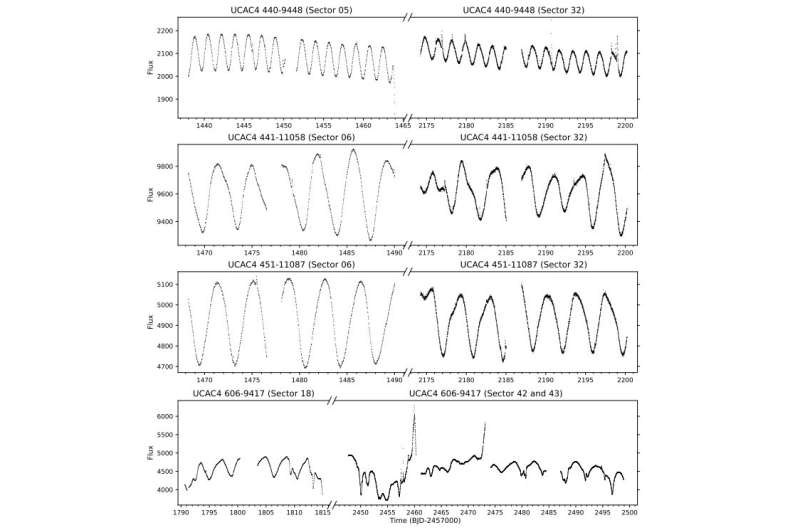April 14, 2022 report
Chinese astronomers discover nine super lithium-rich unevolved stars

Using the Large Sky Area Multi-Object Fiber Spectroscopic Telescope (LAMOST), astronomers from China have detected nine new unevolved stars. The newly found stars exhibit an unusually high abundance of lithium. The finding is reported in a paper published April 7 on arXiv.org.
Although the lithium abundance of most stars is fairly low, some of them contain lots of lithium (Li)—more than the meteoritic value of 3.3 dex. Astronomers suppose that the stars with unusually high lithium abundance should experience lithium enrichment. However, the current models on such enhancement mechanism are still debated, and none of them can well explain those stars.
In order to better understand the mechanism of lithium enhancement, studies of super lithium-rich unevolved stars are required. Given that to date only a few objects of this type have been discovered, a new study by Taisheng Yan of the University of Chinese Academy of Sciences in Beijing, China, and colleagues, in which the detection of nine new stars of this class has been presented, may be a breakthrough in this field.
"We discovered nine super Li-rich unevolved stars with NLTE [non-local thermodynamic equilibrium] Li abundance A(Li) higher than 3.8 dex from the LAMOST-MRS, which is the largest sample of such type stars," the researchers wrote in the paper.
The nine newfound stars present unusually high levels of lithium abundances, which suggests that they must have experienced a history of lithium enrichment. Eight of them have nearly solar metallicity (between -0.4 and 0.4 dex), while the most metal-poor one is UCAC4 646-05072 with metallicity at a level of −0.69 dex.
In general, the stars reported in the study have radii between 0.89 and 2.51 solar radii, while their masses range from 0.78 to 1.6 solar masses. The effective temperatures of these stars were measured to be between 5,100 K and 5,800 K, except for the hottest star UCAC4 629-030411, as it has an effective temperature of 6,807 K.
Four stars of the sample, namely UCAC4 440-009448, UCAC4 441-011058, UCAC4 451-011087 and UCAC4 606-009417, turned out to be young stellar objects (YSOs). Their lithium abundances are above 3.8 dex, which is about three times higher than that of the upper envelope value for the young stars reported by a study published in 2021. Given that these four YSOs and also three other stars are fast rotators, the astronomers assume that the accretion of circumstellar matter may be the main contributor to their lithium enhancement.
"Considering all of them are fast rotators (v sin i >15 km/s), the most likely possibility is the accretion of circumstellar Li-rich matter," the researchers noted.
Further studies are necessary in order to confirm this scenario. The authors of the paper hope that the ongoing LAMOST medium-resolution spectroscopic survey (MRS) will yield more discoveries of super lithium-rich unevolved stars.
More information: T.-S. Yan et al, Discovery of Nine Super Li-rich Unevolved Stars from the LAMOST Survey. arXiv:2204.03180v1 [astro-ph.SR], arxiv.org/abs/2204.03180
© 2022 Science X Network




















